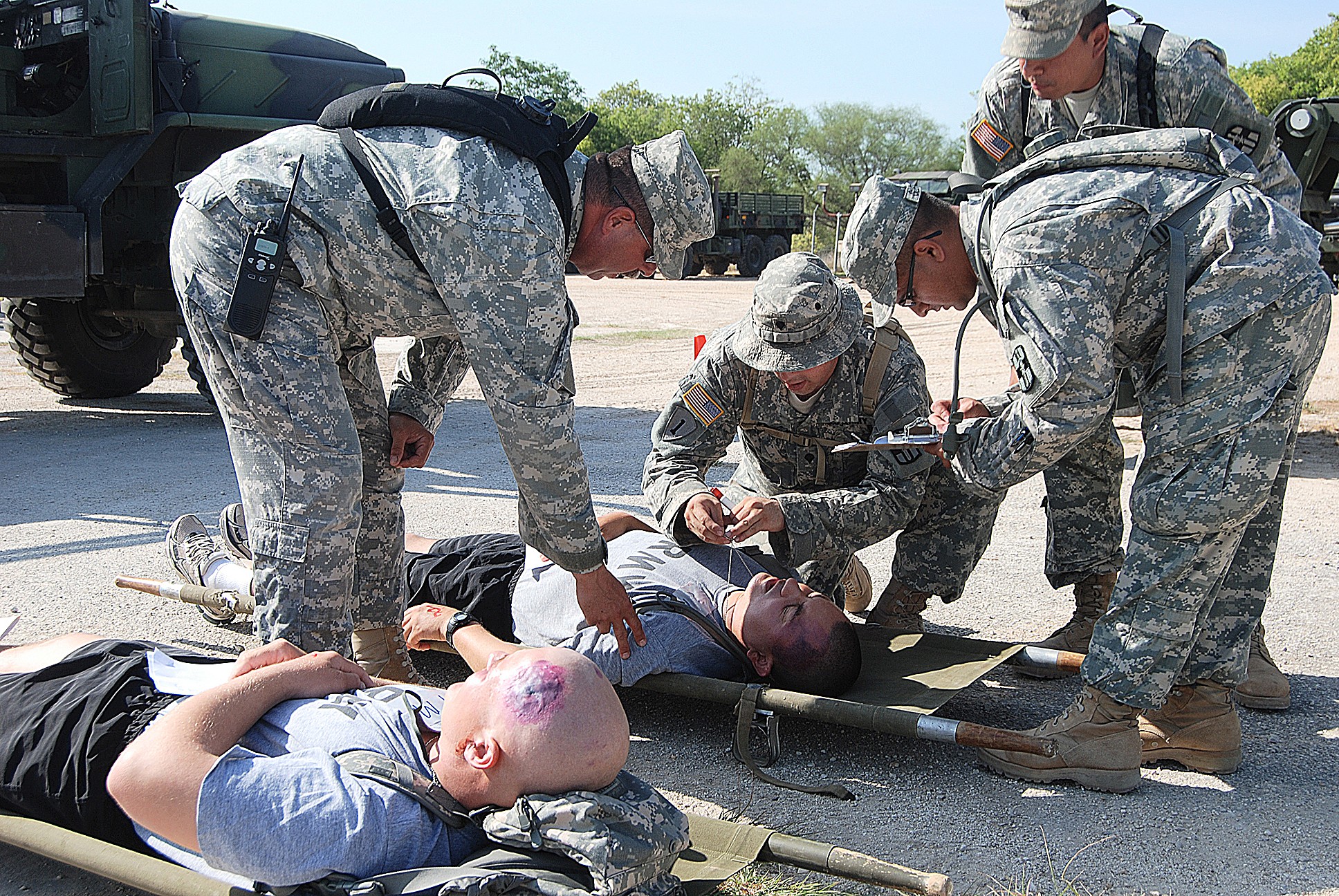FORT SAM HOUSTON, Texas --Military trucks carrying Soldiers with various mock combat injuries such as gunshot wounds, impalements, arm wounds, head wounds, back injuries, and chest injuries stopped in front of the 228th Combat Support Hospital for treatment. Outside and inside the 228th CSH, administrative and medical personnel, aware of the casualties were ready at their duty stations to provide medical care.
This was the beginning of the mass casualty exercise Aug. 12 at Fort Sam Houston for the active duty and reservists assigned to the 228th CSH as part of their annual two week training, and in preparation for the Global Medic exercise which will be held at Fort Hunter Liggett, Calif.
Col. John Gouin, commander, 228th Combat Hospital, said, "I wanted to bring back some of my experiences from Iraq. What we will see here is a training exercise, and I expect mistakes here, but not over there (Iraq). In a real mass casualty, there is chaos, but it is an organized chaos. Here it is more controlled.
We have personnel who have been to Iraq, and they will be able to teach those (Soldiers) that haven't been there."
As a civilian, Gouin is a podiatrist and has a practice in Corpus Christi, Texas.
With 248 beds, the combat support hospital site is equipped with a kitchen, medical and vehicle maintenance, human resources, supply, laundry, an operations center, intelligence center, communications, everything a hospital needs, including a V-satellite providing internet capability.
228th CSH Executive officer, Lt. Col. Brenda Havelka said, "With inventory issues, requisitioning in for equipment that was broken or not serviceable, it took 72 hours to put up. Part of the plan is to get people and equipment together."
Havelka said 125 personnel, who are participating in the exercise, have been staying in the living quarters, part of the hospital site. Another 25 support personnel come in and out of the area providing support.
As casualties arrived, patients are placed on litters which become trauma beds. All patients are triaged outside. The more critical enter the Emergency Medical Treatment Section first. Before they do, Patient Administrative Division personnel remove any personal gear such as weapons. "We take all equipment necessary before they go into the hospital," said Spc. James Mejia, PAD specialist.
In the EMT section, Col. (Dr.) William Pheifer, trauma doctor in charge, moves from patient to patient as nurses work to stabilize them. After stabilizing the patient, some will be sent to the pre-op ward to prepare for surgery, others, depending on their injuries, will be moved to a different ward for further care or monitoring.
In the operating room, the doctor and his staff from the surgical technician to the anesthesiologist, went through all the motions of a real surgery to include hand washing.
When a patient is out of surgery, he is then transferred to Intensive Care Unit 1. This unit contains 12 beds and takes care of critical care patients. During the exercise, as medical personnel were busy working on various patients, a civilian woman came in with pregnancy difficulties after delivering her baby.
"I was surprised when she came in. But we have to care for civilians also," said Maj. Rey Rosario, in charge of ICU1 and an Internist and Nephrologist in civilian life.
The Immediate Care Ward with 20 beds is for patients who need or require minimal care, comfort care, are expecting, and patients waiting to get surgery but are not critical. The ward uses combat medics and nurses to care for patients.
Gouin said, if needed, the hospital can add an additional ICU area.
"We got a lot of good practice in, got to socialize with the Soldiers and make sure that they know what their regular practice would be if we were in a real wartime situation," said Capt. Angela Williams, ICU1, critical care nurse
"The simulated injuries were different, but is everything you'd expect if you went into a real wartime situation," she said.




Social Sharing